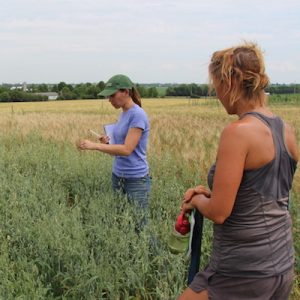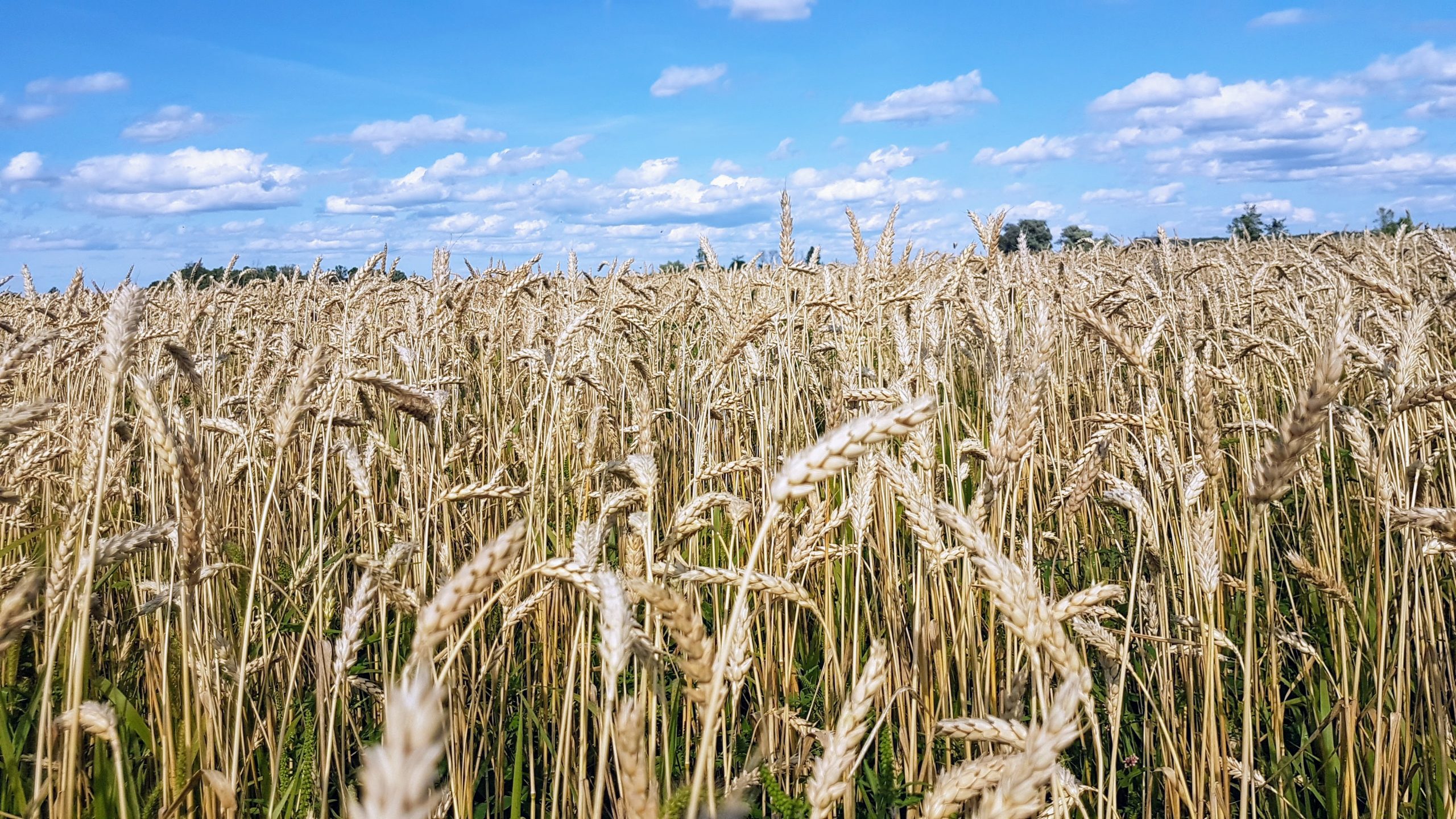By Rob Wallbridge
Diversifying crop rotations is a key principle of regenerative agriculture. The proven benefits include improved soil health, better water quality, reduced greenhouse gas emissions and energy use, lower pesticide use, and increased profitability and economic resilience. For large-scale field crop producers, however, breaking the corn-soy cycle can be a struggle. Among other factors, the bulk of industry research and extension resources have long favored corn and soy, reinforcing the profitability, reliability, and convenience of producing these staple commodities. Across much of their primary production areas, corn and soy are king, with the runner-up wheat dubbed “poverty grass” and other small grains like oats, barley, rye, triticale, and spelt trailing far behind.
Supports farmers who want to diversify their crop rotations
A farm organization in Ontario, Canada is looking to change all that. The Ecological Farmers Association of Ontario’s Small Grains Program supports farmers who want to diversify their rotation by adding a small grain, followed by a legume cover crop or forage crop. The program is the result of an invitation from the Weston Family Foundation to the Ecological Farmers Association (EFAO) to explore ways to increase the adoption of ecological farming practices by combining incentive payments with farmer-to-farmer support. The idea fit well with ongoing work by the EFAO to help farmers proactively respond to climate change and to further on-farm research and participatory plant breeding projects in small grains.

Small Grains Program team members examine a field trial of oats
Program support includes direct payments of $40 per acre, up to a maximum of 100 acres per farm, in addition to training and support for both production and marketing challenges through free membership in their Small Grains Network.
The payments are intended to both eliminate some of the perceived risk (in practical terms it covers the cost of establishing the cover crop) and to recognize the “environmental goods and services” provided by farmers adopting these practices. The networking and training help farmers succeed in producing crops that may not be brand new to them, but are certainly less familiar than the corn and soybeans they have grown every year. It’s also intended to communicate both the hard and soft benefits of including small grains in a rotation.
Adding small grain increases corn and soybean yields, improves soil health
Wheat and other small grains are perceived as low-profit, or even money-losing propositions; as a result, the acreage of these crops tends to fluctuate with commodity market prices. However, long-term crop rotation field research in Ontario has shown a 15% and 13% yield increase in corn and soybeans respectively when a small grain or forage crop is added to the rotation. The research also demonstrates that their inclusion reduces nitrogen fertilizer requirements, improves soil health, eases the transition to reduced tillage systems, facilitates the inclusion of cover crops, and increases farm resilience by stabilizing yields over time and increasing yields in drought years.
The EFAO notes that small grains also diversify a farm’s income stream and labor requirements, as well as serving as an essential element in re-integrating livestock on farms—another principle of regenerative agriculture. Reduced pesticide use is another bonus: according to the EFAO, diverse rotations can lead to a 6-fold decrease in herbicide use, with a potential freshwater ecotoxicity up to 200 times lower than a simple corn-soybean alternation.
Strong interest in program
The Small Grains Program is open to all sizes of farms (one acre of small grains is all that’s needed to qualify) and all types of farmers (farmers currently growing wheat, for example, can qualify by adding another small grain/cover crop or forage combination to their rotation). Although it launched late in 2020, interest and uptake were immediate: in a 10-day window, the program received 70 applications for grains grown for 2021 harvest. Eight producers were able to secure funding for the initial budget of 600 acres on farms across the province, ranging from those with over 500 acres in production to vegetable growers looking to diversify their rotation on a handful of acres.
In a province with over 6 million acres in grain production, 600 acres seems like a drop in the bucket to some, but program coordinator Maureen Balsillie is undaunted. She notes that this is a pilot project, intended to gather feedback from participants and funders to inform future expansion. She also points to the Practical Farmers of Iowa’s Small Grains Cost-Share Program, which has grown from similarly humble beginnings to encompass over 10,000 acres in just 4 years.
Further proof of both the Program’s immediate impact and future potential is the Small Grains Network component, which has swelled to over 140 members. Network members benefit from monthly webinars, newsletters, and access to a network of other small grain producers, both new and experienced. Field days and research projects are also planned. According Balsillie, “The technical support offered by the Small Grains Network can make it easier for farmers to adopt this systems-based approach to a crop rotation. The most engaged members aren’t always the ones receiving payments through the program: these peer-to-peer opportunities are in high demand.”
“Small grains have big gains” is the EFAO Program’s slogan, and like regenerative agriculture in general, those gains are benefits enjoyed by farmers, eaters, and the planet as a whole.
Rob Wallbridge is an organic farmer and agronomy sales lead for SureSource Agronomy





